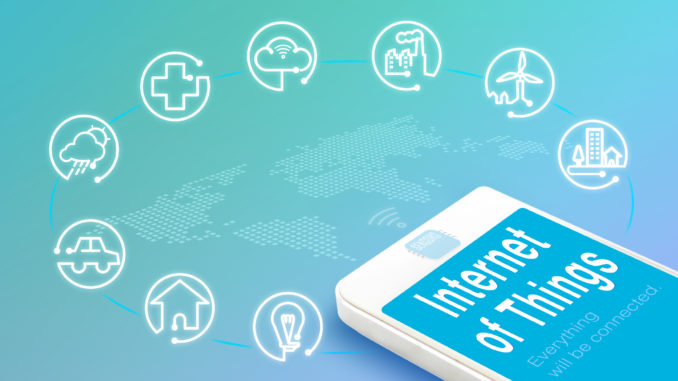
Article Contribution
Many Internet of Things (IoT) applications begin as experiments. This might involve the systematic collection of data from remote sensors or connected machines. Alternatively, the experiment might involve remote monitoring and control of a device to control traffic or the flow of wastewater. Such experiments often yield operational insights or, more efficient ways to support remote operations.
An early example is the connected vending machine, typically found at railway stations and gyms. Remote connectivity allows suppliers of canned drinks to keep track of inventory and to gauge demand for different types of snacks and beverages. Better information creates the basis for optimizing capacity allocated to popular drinks and to replenish vending machines more dynamically, so avoiding the prospect of disappointed customers.
The Challenge of IoT Innovation
While the prospect of remote monitoring and control holds massive promise, the IoT industry faces a conundrum. There are countless variations of the basic use-case, each differing by vertical sector. Building on the remotely monitored vending machine example, this is conceptually similar to a personal health monitoring appliance and, a robot in a manufacturing cell. However, the technologies involved can be very different, as evidenced by the array of open-standard and proprietary wireless connectivity options available in the marketplace.
The fragmentation of use-cases and technologies poses a real challenge to widespread adoption of IoT. More importantly, it requires the use of common standards that will drive economies of scale to improve affordability and lower barriers to adoption.
Horizontal Architecture and Open-Standards Approach
The oneM2M Partnership Project (oneM2M) was established in 2012. At that time, several, national standardization bodies agreed on the need for a common standard for M2M/IoT systems, one that would avoid regional variations and promote a global IoT market on par with the cellular industry.
Building on the collaborative contributions of over 250 academic, commercial and research organizations, oneM2M standards define a horizontal architecture for IoT systems. This builds on an analysis of multiple IoT use-cases across different industry verticals to identify commonalities for standardization. In its most basic form, oneM2M’s horizontal architecture has three layers. The lower layer corresponds to devices and communications technologies. The upper layer corresponds to applications that use data from IoT devices and sensors to identify operational trends for decision-making and control interventions. A set of technical specifications in the scope of oneM2M standards constitute a middleware capability between the upper and lower layers.

As illustrated, these show how it is possible to connect devices and gateways to applications via different communications networks. The middleware arrangement creates an abstraction layer that masks the underlying technical complexities of connecting applications to sources of data. It allows one or more data sets to be used by several applications, even where these are supported on different platforms, thanks to oneM2M’s support for distributed and federated architectures.
One way to understand the middleware capability is as a toolkit of common service functions. These are functions that all IoT applications rely upon. An example is the Registration function which provides a single registration point to establish the authorization and authentication relationships between different device, gateway, platform, and application entities in an IoT solution.
Another common service function is Security. Here oneM2M specifications define a common approach for the handling of sensitive data, security administration, establishment of security associations, access control (identification, authentication, and authorization) and identity management.
Implementation Examples Across Industry Verticals
The middleware approach, comprising a toolkit that developers can use to build and deploy IoT systems has succeeded in a variety of application scenarios. Korea committed to the oneM2M standard in 2014. There were three early deployments in different parts of the country. One focused primarily on school zone safety, another on smart eco-city services and the third emphasized healthcare services for elderly people and for pregnant women. In 2020, government authorities in India evaluated and approved oneM2M as a national standard. One of its R&D agencies, the Centre for Development of Telematics (C-DOT), is applying the standard for intelligent transport applications. There are high hopes that oneM2M will feature in India’s 100 Smart Cities initiative.
Elsewhere, funding from the UK government’s Innovate UK agency helped to demonstrate the potential for a large-scale data exchange. There, several public sector bodies collaborated with data analytics and facilities managers to demonstrate the potential of pooling data and allowing selective access for use in applications such as park-and-ride services, traffic congestion management and journey planning at large spectator events. The city of Hamburg applied oneM2M standards in combination with its geospatial data platform to publish static and time-series data arriving from many different sources. In France, the city of Bordeaux mandated oneM2M standards as part of its smart street lighting scheme. These examples illustrate the potential of oneM2M standards, notably in large scale and multi-player environments where there is a need to share data across application silos and organizational boundaries.
Standardization Roadmap for Future IoT Requirements
oneM2M meets on a regular basis throughout the year, following tried and tested methods for the development of standards. As a result, oneM2M is an active and evolving standard. This is partly necessary to address new requirements as IoT systems become more sophisticated. The process began in 2015, when oneM2M issued Release 1 of the standard. Members continued to add to the foundational elements over time.
At present, oneM2M Working Groups are focused on new functionality in Release 4 and planning the standardization roadmap for Release 5. There are also parallel activities in testing implementations. This benefits organizations that are building oneM2M components to assess their conformance to the standard and to demonstrate cross-vendor interoperability.
Future Directions
Having established the foundations for end-to-end IoT systems based on an open standard, several items proposed for future releases of the standard highlight the future opportunities for operational systems. One of these deals with the handling of IoT data in multi-party environments. An example might involve a municipal authority that is collecting data from city assets and the public transport network. While this data is useful for the municipality’s operational priorities, there can be secondary users for some data sets. These might include agencies that wish to monitor environmental pollution or providers of mobility services whose journey planning applications would benefit from city data about traffic flows, planned roadworks or temporary street closures.
New work items in the oneM2M workplan deal with issues of data interoperability, based on standardized data models. Another work item deals with data privacy and licensing, in effect creating a policy framework that allows producers of data to control downstream uses.
Another important development is the requirement to build IoT systems that combine new-build sensors and applications with legacy systems. This is particularly important in the industrial sector which makes widespread use of the OPC-UA communications standard for programmable control systems. A key principle of the oneM2M standard is to re-use established standards and technologies wherever possible. OPC-UA is one of several standards where oneM2M applies its interworking proxy specifications. In generic terms, this provides a means of translating communications protocols and data definitions between oneM2M and legacy domains to enable interworking capabilities.
Dale Seed, oneM2M Technical Plenary Vice-Chair and Convida Wireless
About oneM2M
 oneM2M is the global standards initiative that covers requirements, architecture, API specifications, security solutions and interoperability for Machine-to-Machine and IoT technologies. oneM2M was formed in 2012 and consists of eight of the world’s preeminent standards development organizations: ARIB (Japan), ATIS (U.S.), CCSA (China), ETSI (Europe), TIA (U.S.), TSDSI (India), TTA (Korea), and TTC (Japan), together with industry fora and consortia (GlobalPlatform) and over 200 member organizations. oneM2M specifications provide a framework to support applications and services such as the smart grid, connected car, home automation, public safety, and health. oneM2M actively encourages industry associations and forums with specific application requirements to participate in oneM2M, in order to ensure that the solutions developed support their specific needs. For more information, including how to join and participate in oneM2M, see: www.onem2m.org.
oneM2M is the global standards initiative that covers requirements, architecture, API specifications, security solutions and interoperability for Machine-to-Machine and IoT technologies. oneM2M was formed in 2012 and consists of eight of the world’s preeminent standards development organizations: ARIB (Japan), ATIS (U.S.), CCSA (China), ETSI (Europe), TIA (U.S.), TSDSI (India), TTA (Korea), and TTC (Japan), together with industry fora and consortia (GlobalPlatform) and over 200 member organizations. oneM2M specifications provide a framework to support applications and services such as the smart grid, connected car, home automation, public safety, and health. oneM2M actively encourages industry associations and forums with specific application requirements to participate in oneM2M, in order to ensure that the solutions developed support their specific needs. For more information, including how to join and participate in oneM2M, see: www.onem2m.org.



